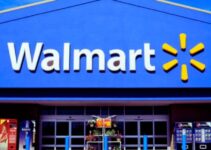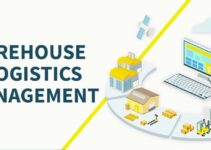Nestle is the world’s leading food and beverage processing Swiss multinational conglomerate. The food and drink company started its business in 1866. Today, we’ll discuss the value chain analysis of Nestle supply chain analysis; primary and supporting activities in the process of value chain analysis Example Company. They are inbound and outbound logistics, operations, marketing, and customer service; infrastructure, HRM, technology, and procurement as an application of the value chain analysis process.
Grains and Cereal Sourcing Countries of Nestle
- USA
- UK
- Russia
- Mexico
- France
- Brazil
- Australia
- Argentina
The Value chain analysis of Nestle supply chain analysis would analyze the primary and supporting activities in the process of value chain analysis. They’re inbound and outbound logistics, operations, marketing, and services; infrastructure, HRM, technology, and procurement. Here’s the supply chain analysis of Nestle value chain analysis company example as follows;
Value Chain Analysis of Nestle
Let’s discuss the primary and supporting activities involved in the process of value chain analysis of Nestle supply chain analysis. It is an application of value chain analysis based on Porter’s model; some of the key elements and components of value chain analysis are as follows;
Primary Activities of Nestle
The primary activities are directly involved in the production of products and goods and adding value to the food and drink company. Some of the five main primary activities in the value chain analysis of Nestle supply chain analysis are as follows;
Inbound Logistics of Nestle
I-Large Suppliers Network
Nestle has established a very large network comprising approximately 165000 direct suppliers and 695000 individual farmers. The worldwide large and diverse suppliers’ network helps the company to ensure the availability of raw food supplies and materials for production.
II-Responsible Sourcing
Nestle is highly careful about responsible sourcing and makes sure that its suppliers are sourcing the material and raw food supplies sustainably. In order to keep working with farmers and suppliers, the food brand has developed some basic sustainable standards and requirements. It deals with the following areas and they’re as follows;
- Transparency and compliance with business ethics
- Human rights standards and requirements
- Animal-based production and fisheries standards
- Environmental protection and sustainability requirements
III-Sustainable Growth & Ecosystem
In order to improve the quality and productivity of soil and agricultural land; Nestle partners with various universities, agricultural organizations, government institutes, farmers, and conservation groups. The objective is to achieve the following;
- Supporting local farmers
- Protecting the environment
- Nutrients and irrigation management in the river
- Improving the soil quality
Outbound Logistics of Nestle
I-Transportation & Distribution
Nestle employs various transportation channels for the distribution of its food products and goods in various countries across the world. In order to timely meet the customers’ needs and demands, Nestle implements an intensive distribution strategy. It focuses on moving raw food ingredients from the suppliers to the production and manufacturing factories; distribution centers, warehouses, and retail stores across the globe.
II-Green Logistics
Nestle invests a significant amount of capital resources in electric and hybrid technology to shift away from fuel-powered logistics and transportation channels. The objective is to decrease the greenhouse gas carbon emission rate. In fact, the food brand Nestle plans to achieve a net zero carbon emission rate in the future.
Operations of Nestle
I-Productions and Manufacturing Factories
Nestle has approximately 447 production and manufacturing factories in over 189 countries across the globe. They help the company to produce and process food and beverages and offer 189 countries worldwide. The global network of production and manufacturing factories helps the company to timely deliver the finished food items to the targeted customer market.
Marketing & Sales of Nestle
I-Marketing & Advertisement
Nestle implements various types of marketing and advertisement campaigns for the promotion of its products and goods to the customers. The food and drink brand employs multiple channels like social media, digital media platforms, TV, print media, billboards, celebrity endorsement, sponsorships, and discounts to amplify its customer market reach and improve sales.
Services of Nestle
Nestle offers a wide range of products and services to customers in the food and drink category. Most of the company’s products become services after consuming them. However, some of the main products and services of Nestle are as follows;
- Hot chocolates
- Creamers
- Roasts and ground coffee
- Dairy beverages
- Confectionary items
- Powdered milk
- Liquid milk
- Cream
Supporting Activities of Nestle
Supporting activities are indirectly involved in the production of products and goods and adding value to the food and beverage company. Some of the main supporting activities in the value chain analysis of Nestle supply chain analysis are as follows;
Infrastructure of Nestle
Nestle has established a very large infrastructure of production and manufacturing factories, warehouses, retail networks, distribution channels, and supply chain networks. The worldwide infrastructure helps the company to smoothly perform its various productions and manufacturing operations in delivering the finished goods to the end consumers.
HRM of Nestle
Nestle has employed approximately 270 employees to manage its global operations. The human resource management department of the company plays a key role in building a healthy and innovative working environment, promoting sustainable production and growth, and complying with human rights standards and regulations. However, some of the main awards Nestle has won over the years are as follows;
- Henry Spira Corporate Progress Award
- World Environment Center Gold Medal Award
- Gold Food Industry Award
- National Quality Award
Technological Development of Nestle
Nestle has earned a global reputation for producing and offering healthy food products to customers. The company invests a significant amount of capital resources in research for the development of innovative products; new production materials, and unique and efficient methods of production. However, it allows the company to improve the quality of products and reduce the wastage of resources.
Procurement of Nestle
Nestle is highly careful and cautious about ethical sourcing and procurement of raw materials and food ingredients for food processing and production. The company has set up clear regulations for suppliers and vendors to comply with human rights standards and social and environmental sustainability requirements.
Conclusion: Nestle Value Chain Analysis Example Company | Application of Value Chain Analysis Process
After an in-depth study of the value chain analysis of Nestle; we have realized that Nestle is the world’s leading food and drink brand. If you are learning about the Nestle value chain analysis example company; then you should keep in mind the abovementioned primary and supporting activities. They’re inbound and outbound logistics; operations, marketing and sales, and services; infrastructure, procurement, HRM, and technological development as an application of the value chain analysis process.
Ahsan is an accomplished researcher and has a deep insight in worldly life affairs. He goes Live 3 days a week on various social media platforms. Other than research writing, he’s a very interesting person.


